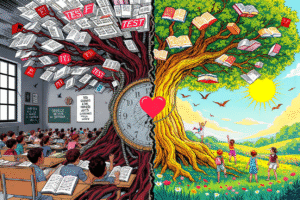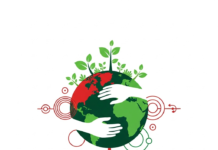Dear Alegria Natural Community,
Here we are, once more, sharing with you the latest news on independent non corporativist science, education, spirituality, zen-preneurship, integrative medicine, nutrition, self-care…and anything related to wellbeing and ecology. Healthy life, happy life.
It is exciting times, because we are about to launch Eduk@s, an international experiential educational experience. Why experiential education? Because, after a lot of research done by our foundation (you can see a small sample of all that we have done in the past decade on the report below), it is education that truly works to build creative, capable, efficient, joyful, compassionate, empathic and respectful human beings. So we, and thousands around the world are up for the challenge.
At Eduk@s, children from 0-99 learn by observing and doing – yes ALL ages learn together and from each other. We plan the activities together. Our methodology adapts to each Human Being; as they learn by doing they shift interests and strenghten skills. All the roads are open for them to explore their true being, interests, gifts, affinities: to live, and learn to live healthy, with healthy adults that see each child as full of potential, focusing on self-understanding, tolerance, respect, communication and collaboration skills.
As mention before, this is just a model of many around the world that put the child at the centre of education, we base our educational programme on science, fact based methodologies and a lot of attention to our wonderful children. True Love.
In 2012, we co-funded the ground-breaking documentary: “Prohibited Education”.Since then, a lot of things have happened. And on the resources below, in which this report has been based, you will fin a lot of brave souls that have dedicated their lives to education and to discern the problems and potential solutions. Together.
Since then, we have been collaborating, to knit together a needed shift in education, the R&D project Eduk@s was born. This programme is an alternative response to the derelict estate of our official indoctrination systems around the world. Please, read the report that the Alegria Natural Foundation has created, together with sources from brave professionals and experts that explain how our current systems don’t educate, but indoctrinate for helplessness and blind obedience.
Our system is based on children’s natural development. The most innovative, cool, and cutting-edge educational methodology whose mission is to bring the latest in education to rural areas. The school is present in America, Asia, Africa, and Europe. It focuses on autonomy, respect, and experiential education that teaches collaboration, self-awareness, emotional management, and self-initiative.
Now, let’s go with the facts, shall we?
These sources critically examine global education systems, highlighting their historical origins and current shortcomings. Several videos focus on the intense academic pressure and high rates of student self-inflicted death in Asia, attributing these issues to rigid, exam-focused structures that suppress creativity and individuality. Other sources discuss the failure of Western education to foster critical thinking, financial literacy, and essential life skills, with arguments that the system prioritizes memorization and conformity. The discussions collectively suggest that traditional schooling models are outdated and ill-equipped to prepare students for the complexities of modern society, advocating for organic and solid reforms that prioritize individual well-being, practical skills, and a holistic, adaptable approach to learning.
You can choose to listen to the conversation about “The Forbidden Education” documentary and/or read on below our briefing document about education and Humanity.
The Forbidden Education audio summary, in conversation format (English):
*we are working on bringing more conversation audio files in different languages.
Sources:
Youtube video library:
https://www.youtube.com/watch?v=P0ysqiwZflY&pp=ygUTd2h5IEkgbGVmdCBhY2FkZW1pYdIHCQnNCQGHKiGM7w%3D%3D
https://www.youtube.com/watch?v=HRGKRKUlwhA&pp=ygUTd2h5IEkgbGVmdCBhY2FkZW1pYQ%3D%3D
教育













